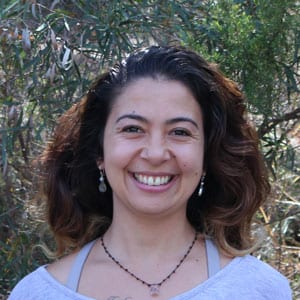“IF YOU WANT TO FIND THE SECRETS OF THE UNIVERSE, THINK IN TERMS OF ENERGY, FREQUENCY AND VIBRATION.”
– NIKOLA TESLA
We need silence in order to hear sound and we need to experience sound in order to appreciate silence.
The dualities of this world that for whatever reason exist together.
Sound is a vital part of life here on Earth.
Everything in this universe communicates via sound, animals use sound to communicate potential predators or threats and also in order to attract a mate.
We as a human species have evolved this ability into spoken language (as a way of exchanging information) and music (essentially, a sound-based system for communicating emotion).
Sound is caused by something emitting energy in the form of a vibration.
Areas of high and low pressure move outwards creating a form of longitudinal wave (a wave which vibrates in the direction of travel). The amplitude (volume) and frequency (pitch) of the sound wave depends on what the source is and the amount of energy supplied outwards.
Studying the interaction of sound waves with certain materials can tell scientists a lot of information about that material.
Ultrasound is another important area of study, especially in construction and medicine. High frequency sound waves are sent through the area of interest, for example the human body and the waves that are reflected back to the receiver tell us about the internal structure of the object.
Sounds has been around since the beginning of creation.
- Ancient cultures recognised sound, vibration, and frequency as powerful forces that influence life all the way down to the cellular level.
- Shamanic traditions are found throughout history and used drums, singing and dancing to access trance like states.
- Researchers believe that repetitive shamanic drumming and singing open a pathway to the subconscious, bringing an opportunity for healing and integration.
There is something much deeper to be discovered within sound and perhaps is why it was such a vital part of human existence and is something we are yet to fully understand the real benefits sound can have.
Much more studies are now underway in how sound can be used as an effective tool for reducing feelings of tension, anxiety, and depression, and increasing our well-being.
According to a study published by the National Institute of Health, “Music effectively reduces anxiety for medical and surgical patients and often reduces surgical and chronic pain.”
Also an article in “The British Journal of General Practice,” states that music has a direct effect on pain levels. Responses to a questionnaire sent to a group of chronic pain patients showed that, “those who listened to music more frequently had a higher quality of life, suggesting that music can lessen chronic pain.”
Sound therapy and healing has recently become increasingly popular and widespread around the globe as we begin to experience the benefits it can have for ourselves. Music has a way of giving us the ability to experiencing different emotions even without words. When we are happy we tend to listen to certain music or when we are sad the music we prefer changes to our moods.
Traditionally only a few instruments were used such as didgeridoos, drums and other percussion instruments and now there is a large array of different sound instruments that can be used as we have access to different instruments from around the world.
Interestingly enough though despite the amazing instruments we now have access to they have found the most effective form of sound healing is the human voice, followed by singing bowls and tuning forks.
I would say it won’t be long until sound therapy is a common modality for mainstream medicine and is something that can be used to complement other healing methods.
If you would like to experience this for yourself I offer a taste of sound meditation every Wednesday to Friday here at Billabong Retreat.
About Larissa
Larissa is a yoga, meditation and sound facilitator who currently hosts our Wednesday to Friday retreats. Her mission is to hold a loving and nurturing space for others to be themselves and to become comfortable in the uncomfortable, real and vulnerable.
Larissa is an advocate for not trying to recreate ourselves but to discover how beautiful we already are. She says “to meet oneself we must be willing to face the truth, our fears, our traumas, and our internal world. We must take responsibility for our lives and not blame it on others.”


